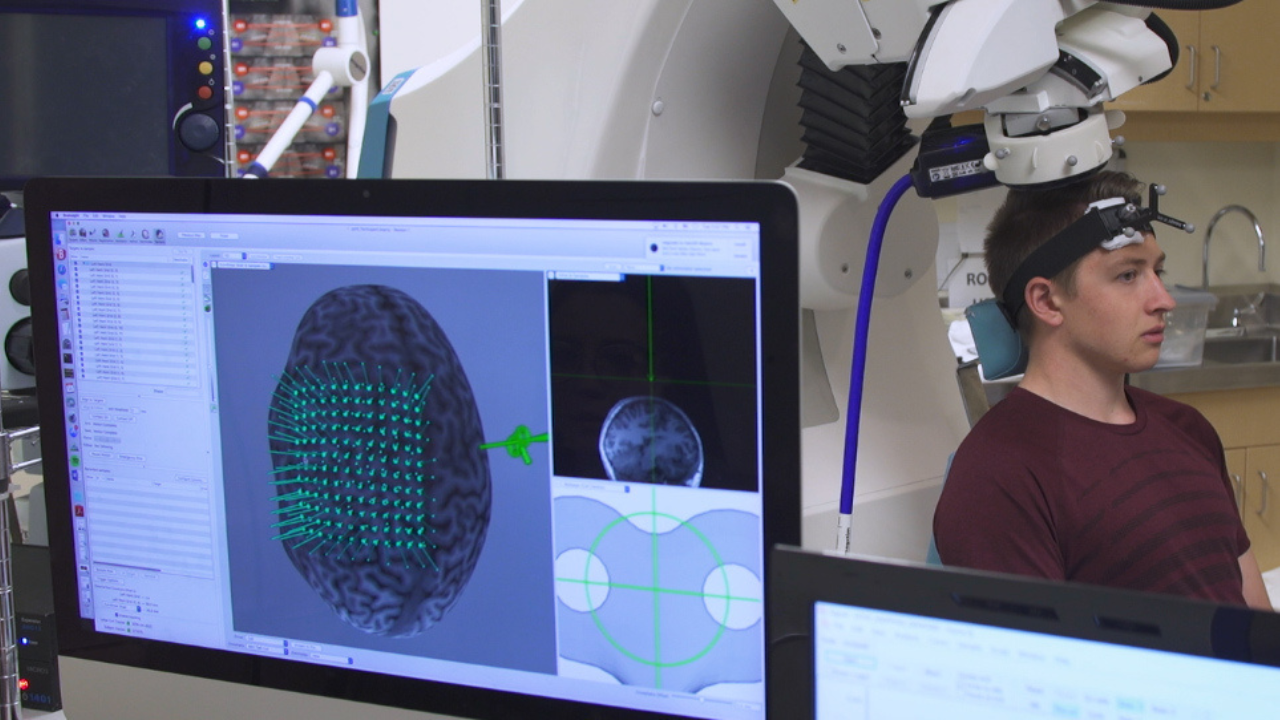Understanding Brain Mapping in Transcranial Magnetic Stimulation (TMS) Therapy
Transcranial Magnetic Stimulation (TMS) therapy has emerged as a promising treatment for various mental health conditions, particularly depression that resists conventional treatment. As this therapy gains popularity, one component that remains essential — yet often overlooked — is TMS brain mapping. This crucial step ensures the treatment targets the right areas of the brain for maximum effectiveness. But what is TMS, and how does brain mapping play a role in its success?
In this article, we’ll explore what TMS is, how TMS brain mapping works, what to expect in a TMS mapping session, and why this phase is vital in delivering precise, results-driven care.
What Is TMS?
Transcranial Magnetic Stimulation, or TMS, is a non-invasive therapy that gently uses magnetic pulses to activate targeted areas of the brain linked to mood and mental health. It’s most commonly used to treat major depressive disorder (MDD), especially in individuals who haven’t responded well to medication or psychotherapy. Unlike medications, TMS doesn’t circulate through your body; instead, it directly affects brain activity by using electromagnetic pulses.
These pulses are generated by a coil placed near the scalp, usually targeting the prefrontal cortex, the area believed to be underactive in people with depression. As the pulses are delivered, they modulate neural activity, helping to restore balance in brain circuits that influence mood and behavior.
The Role of Brain Mapping in TMS Therapy
Prior to starting TMS therapy, individuals typically go through a brain mapping session—commonly referred to as TMS mapping—to pinpoint the most effective stimulation area. This is a highly personalized process that identifies the exact location in the brain where stimulation will be most effective.
No two brains are the same. Just like everyone has a unique fingerprint, each person’s brain anatomy varies slightly. That’s why TMS brain mapping is essential — it ensures the therapy is tailored to the individual.
During this session, clinicians locate the motor cortex, a region that controls voluntary muscle movement. They do this by delivering magnetic pulses to different parts of the scalp and observing motor responses — such as a twitch in the thumb or fingers. Once the motor cortex is identified, clinicians measure the motor threshold — the minimum amount of magnetic energy needed to cause a visible muscle contraction.
From there, they calculate where to place the coil to reach the dorsolateral prefrontal cortex (DLPFC), the area targeted in most TMS depression protocols.
What Happens During a TMS Mapping Session?
A TMS mapping session is usually the first appointment in a TMS treatment plan and lasts about 30 to 60 minutes. Here’s what typically happens:
1. Preparation and Positioning
You’ll be seated in a comfortable chair, and a technician or doctor will fit a special cap on your head, often marked with reference points. The coil will be placed gently against your scalp, and you’ll be asked to relax your body.
2. Motor Cortex Identification
Next, the technician will deliver short magnetic pulses to different spots to locate the motor cortex. You may feel a light tapping sensation on your head or notice a twitch in your hand — this is normal and indicates that the correct area is being stimulated.
3. Motor Threshold Testing
Once the motor cortex is found, the motor threshold is calculated. This involves adjusting the magnetic intensity until a consistent muscle response (often a thumb twitch) is detected. This threshold helps determine the safe and effective intensity for future TMS sessions.
4. Prefrontal Target Location
Finally, the clinician will use your motor cortex as a reference point to find the ideal location on your scalp for TMS magnetic brain stimulation. Some clinics use manual measurements, while others employ advanced neuronavigation systems for higher precision.
Why Is Brain Mapping Important?
You might wonder why so much attention is given to this preparatory step. Simply put, the effectiveness of TMS therapy hinges on how accurately the magnetic brain stimulation is delivered. Stimulating the wrong part of the brain, or using incorrect intensity, can reduce the benefits of treatment — or make it completely ineffective.
Here’s why brain mapping matters:
Precision: It allows clinicians to find your unique treatment location.
Personalization: Everyone’s brain structure is slightly different, and mapping ensures your care isn’t “one-size-fits-all.”
Safety: Knowing the correct stimulation point and intensity minimizes the risk of side effects.
Effectiveness: Better targeting = better outcomes.
Skipping the TMS mapping session or rushing through it could compromise the entire therapy process.
How Brain Mapping Enhances Outcomes
Numerous studies have shown that personalized TMS treatment — guided by proper mapping — leads to higher remission rates in depression and other mental health disorders. Mapping helps clinicians focus on neural networks directly involved in mood regulation, allowing them to fine-tune the therapy over time.
Advanced clinics may even use fMRI scans or EEG data to further refine the process. While such approaches aren’t always necessary, they demonstrate how seriously modern psychiatry takes precision in TMS magnetic brain stimulation.
Final Thoughts
In the journey toward mental wellness, Transcranial Magnetic Stimulation offers new hope — especially when traditional treatments fall short. But for TMS to reach its full potential, brain mapping is not just helpful; it’s essential.
By accurately identifying the right brain target, measuring motor thresholds, and personalizing therapy, clinicians can deliver more effective and safer treatment. Understanding the value of a TMS mapping session can empower patients to ask the right questions, participate actively in their care, and feel confident in their healing journey.
So the next time you hear someone ask, “What is TMS?”, you can answer confidently — and remind them that it’s not just about magnetic pulses. It’s about precisely knowing where those pulses go and why that makes all the difference.

